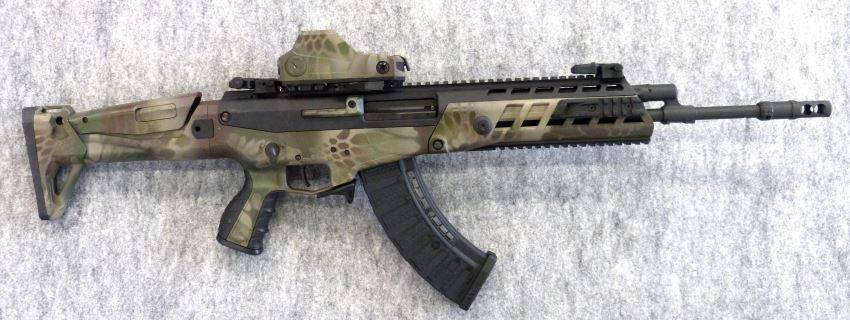Обзор штурмовой винтовки Colt AR-15 / M16
С тех пор как компания Кольт (Colt) приобрела права на производство М16 в конце пятидесятых годов, винтовки М16 и AR-15 были связаны в сознании большинства людей, также как и Colt 45 калибра и Colt 1911. Платформа сильно изменилась с тех пор, как первые винтовки были выпущены компанией Colt и были отправлены во Вьетнам.
Опыт эксплуатации винтовок М16А1 Американскими войсками во Вьетнаме начинает приносить первые печальные плоды. Большое число отказов винтовок в боевых условиях приводит к значительным человеческим потерям среди американских солдат. После такого неубедительного начала винтовка все таки приобрела популярность, притерпев некоторые изменения, пишет издание Tactical Life.
Штурмовая винтовка Colt AR-15 / M16

- Большинство модификаций, как упоминалось ранее, были съинициированы во время боевых действий в Ираке и Афганистане.
- Во- первых, тип пороха в патронах был изменен на более «чистый», дающий гораздо меньше нагара.
- Во-вторых, затворная группа, патронник и канал ствола начинают хромировать, что повышает коррозионную стойкость деталей и облегчает их чистку.
- В третьих, срочно закупаются комплекты для чистки оружия, а в действующих войсках начинается широкая программа обучения солдат чистке и уходу за винтовкой, в рамках которой издаются широко известные наставления по уходу за оружием в виде комиксов.
- Примерно к 1970му году штатные 20-патронные алюминиевые магазины в войсках начинают заменять на 30-патронные, для того чтобы уровнять М16 по этому показателю с советскими и китайскими автоматами Калашникова.

Принятая на вооружение винтовки M16/AR-15 считаются одними из лучших и могут быть использованы в разных модификациях, учитывая такие параметр как длина ствола и т.п. Практически любые дополнительные комплектующие могут быть добавлены постфактум.
Кольт также поставляет несколько винтовок схожих с теми, что разрабатывал Юджин Стоунер еще во время Вьетнамской компании. Существуют определенные различия, хотя основная конструкция довольно схожа. Винтовка, у которой неоткидной приклад, цениться военными заказчиками, включая морскую пехоту США.
Многие годы именно морская пехота США была движущей силой и инициатором всех модификаций, как например изменения в конструкции M16A2 и M16A4. Конечно все пехотинцы все еще уверены в том, что морпехи — это прежде всего стрелки
Поэтому большое внимание уделяется снабжению их стрелковым оружием

Почему же происходит такое смещение в сторону винтовки модели M16A4? Пехотинцы считают, что увеличение прицельной дальности (в сравнении 20-дюймовый ствол M16A4 и 14,5 дюймовый у М4) улучшает точность стрельбы, ее скорость. Таким образом диапазон использования данного вида оружия значительно увеличивается.
Эти и другие характеристики делают данную винтовку популярной среди сотрудников правоохранительных органов разных стран. Кроме ВС США, винтовки М16 армейского образца используются в полиции США (например, полиция Лос-Анджелеса (LAPD) использует списанные из Армии винтовки), эти же винтовки широко поставляются на экспорт.
Их используют многие элитные подразделения других стран, такие как британские SAS или австралийские рейнджеры. Значительное количество М16 имеется на вооружении в Израиле. Одно время винтовки М16 производились по лицензии на Филиппинах и в Южной Корее.
В настоящее время канадская компания Diemaco производит лицензионные варианты М16 под обозначениями С7 и С8 для Канадских Вооруженных сил и на экспорт.
Upper Receivers
Slickside
The earliest version of the AR-15 upper receiver which can easily be identified by its lack of forward assist and brass deflector. This receiver was used on the original M16, USAF weapons, and the SP1 civilian rifle.

A1
The first variant to be fitted with a a forward assist (which has a tear-drop shaped plunger head as opposed to the round plunger used on later rifles). This is the only upper to feature a forward assist without brass deflector.

A1 Flat Top
A unique upper receiver used only on the Model 656 Special Low Profile sniper rifle. It features an integral Weaver scope rail and lower profile folding backup rear sight.

A1E1
An intermediate receiver that was an A1 receiver with the addition of a brass deflector behind the ejection port. It can be distinguished from the A2 receiver by its simpler rear sight. This upper was the one that was chosen by Diemaco (now Colt Canada) for the C7 rifle and C8 carbine. It was also commonly used on the Model 723 and 733 carbines.

A2
This upper was first implemented on the M16A2. It notably differs from its predecessor, the A1 upper, by the addition of a brass deflector and a more complicated range adjustable rear sight. Also replaced the A1’s ‘teardrop’ forward assist button with a round one.

Flat Top
Essentially an A2 upper with the fixed carry handle replaced with a MIL-STD-1913 scope rail. It can often be seen fitted with a carry handle that is most often of the same design as the A2 upper. This is the upper that is used on the majority of current military, law enforcement and civilian rifles.

A2 LMG
A unique upper receiver fitted only to the Model 750. Externally it appears as an A2 upper with the forward assist omitted (being an open bolt weapon, a forward assist would be pointless).

Flat Top LMG
A unique upper receiver fitted only to the Model 950. Externally it appears as a flat top upper with the forward assist omitted (being an open bolt weapon, a forward assist would be pointless).

SMG
The upper receiver used on the 9x19mm submachine guns and carbines is actually a modified slickside upper (a forward assist is not necessary due to the simpler and more reliable blowback action), fitted with a distinctive semi-circular brass deflector over the rear of the ejection port (which is pinned to the receiver and removable, as opposed to the integrally forged one found on 5.56x45mm rifles) and a correspondingly shortened dust cover. The reason for this enlarged deflector is due to the fact that as the SMG is a straight blowback weapons a relatively large amount of gas blasts out of the ejection port, which would be uncomfortable for a left handed shooter if not redirected.

Flat Top SMG
A flat top variant of the original SMG upper with the same removable brass deflector, this is the upper which is used on the current range of submachine guns and carbines.

Slickside (Sightless)
A unique upper receiver found only on the M231 firing port weapon. It is identical to the slickside upper used on the original M16 but features no rear sight, being designed to be aimed using tracer fire. It does however retain the carry handle that the rear sight is normally mounted in along with the windage direction arrows for adjusting the absent sight, due to it being made from a regular slickside forging without the final machining for the rear sight.

варианты картриджей
Так как верхний и нижний приемники могут быть заменены между винтовками, судебно – медицинской экспертизы огнестрельного оружия экспертизы пуль и гильз , может выявить отличительные признаки от ствола и верхней ствольной без указания нижнего приемника , для которых юридические документы могут быть доступны. Человек может использовать несколько верхних группы приемников с тем же нижним приемником. Эти верхние группы приемников могут иметь различную длину стволов и достопримечательность, и могут стрелять различные патрон. Охотник с одной нижним приемником может иметь один верхний приемник с бочкой и 0,223 Remington телескопического прицелом для варминтинга в открытой местности и другой верхний приемник с .458 SOCOM баррелем и прицельными для большой охоты в кустарнике леса. Размеры верхних и нижних приемников изначально предназначенных для 5,56 × 45мм НАТО картриджа наложить общий лимит длины и диаметра ограничения , когда адаптирующие модули для других патронов , включенных в этот список AR платформы калибров . Тот же журнал в нижней группе приемников может содержать разные количества различных патронов.
Использование в преступности и массовых расстрелов
Большинство оружия убийства в Соединенных Штатах с пистолетами . Согласно анализу 2013 по Мэры против незаконного оружия 14 из 93 массовых расстрелов участвующих журналов с высокой пропускной способностью и штурмовых орудий . Тем не менее, винтовки AR-15 типа играют заметную роль во многих громких массовых расстрелов в Соединенных Штатах и стали широко охарактеризовать как оружие выбора для лиц , совершивших эти преступления. AR-15s или аналогичные винтовки были основным оружием , используемым в приблизительно половине 10 смертоносных массовых расстрелов в современной американской истории, в том числе в 2012 году Sandy Hook Elementary школа стрельбы , то 2015 Сан – Бернардино нападение , то 2017 Лас – Вегас съемки , 2017 Sutherland – Спрингс церковь стрельба и 2018 Stoneman Douglas High School стрельба . Gun эксперт Дин Hazen и исследователь массовых убийств доктора Пит Блэр считают , что пистолет выбор массовых стрелков имеет меньше делать с конкретными характеристиками AR-15, а скорее с фамильярностью и эффектом подражателя.
После использования Colt AR-15 винтовки в Порте – Артур резне , наихудшая единоличный инцидент в истории Австралии, страна приняла Соглашение Национального Firearms в 1996 году, ограничение частной собственности на полуавтоматические винтовки с мощностью более 5 раундов ( ).
Stocks
Solid Fixed
Original Colt rifles had a solid stock without an internal storage compartment and one piece butt pad. This stock can also be identified by hinged rear sling loop. This stock was used on the original M16 and early models of the M16A1 until 1971 when it was replaced by the A1 type stock.
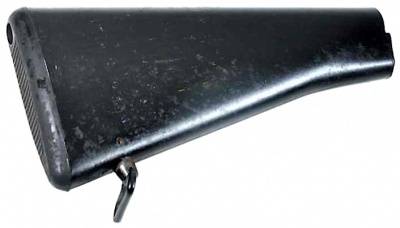
A1 Fixed
An improved stock designed for the M16A1, this introduced an internal storage compartment into the stock accessed by a textured trapdoor in the butt pad. The original hinged rear sling loop was also replaced by a simpler and more robust fixed loop. Despite being commonly known as the A1 stock it was not designed until 1971 (the M16A1 was released in 1967) so early model M16A1s retained the earlier solid stock with hinged sling loop.

A2 Fixed
The M16A2 used a new stock that was slightly longer (16mm, nearly indistinguishable to the regular observer) and made from a much stronger material. The easiest way to differentiate this stock from that found on the M16A1 is the squarer edges on the butt pad, and the fact that the butt pad is chequered over its entire surface (as opposed to the A1 stock which was only textured on the trapdoor cover).

1st Generation Collapsible
This stock resembles a miniature fixed stock, but can be extended by operating a lever inside the butt pad. The only weapon it was used on was the Model 607 Car-15 SMG, and was abandoned for a simpler, cheaper and more robust design for all future carbines.

2nd Generation Collapsible
A stock made from aluminum with a black polymer coating was used on the majority of carbines from the Vietnam war until 1985. Position adjustment is accomplished by depressing a lever on the underside of the stock, releasing it once the stock is adjusted to the desired length. It also has two cutouts ahead of the butt plate above and below the buffer tube to allow a sling to be wrapped around the stock in lieu of a standard sling loop.

3rd Generation Collapsible
This stock was introduced in 1985 and is commonly known as the “fiberlite stock”. The shape is similar to the early coated aluminum stock but was made from plastic, and can be differentiated by its matte finish (the coated aluminum stocks had a shiny black finish) and the two vertical strengthening ribs on each side. Early models were only two position stocks, but later models were four position. This stock fitted with a thick rubber butt pad is the model which is fitted to Diemaco/Colt Canada weapons, and a version of this modified to be a six position stock is used by the Israeli Defence Force on their carbines.

4th Generation Collapsible
Often called the “M4 stock” or “6 position” stock, this was introduced in 2001 as a strengthened variant for use on the M4/M4A1 carbines. It features a number of ridges and recesses on the sides of the stock, a sloped butt plate and the same bottom mounted sling loop found on M16A1/A2 fixed stocks.
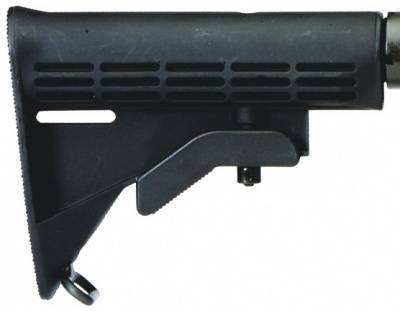
Wire Collapsible
Developed for emergency dismounted use on the M231 firing port weapon, this wire stock is similar to the one found on the M3 / M3A1 “Grease Gun”. Although designed for the M231, it can be fitted to any AR-15 pattern rifle.

Lower Receivers
Slabside
Used only on the AR-15 prototypes and the original M16, the slabside lower can be identified by the lack of any ridges on the right side of the weapon. The push pin at the front of the lower receiver either has a flat round head, or a round head with a circular divot in the centre.
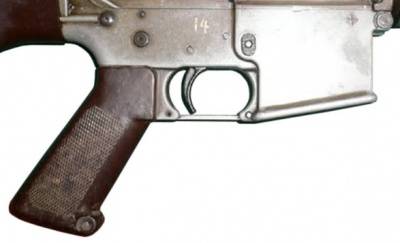 Slabside lower receiver with push pin front pivot
Slabside lower receiver with push pin front pivot
Slabside (Screw Pin)
A variant of the slabside receiver with a screw pin at the front of the receiver is used on early Sporter models up to the AR-15A2 Sporter II. This variant of the slabside lower receiver is much more common than the genuine military slabside lower, meaning it is often used as a stand in for the correct M16 lower receiver in television and movies.
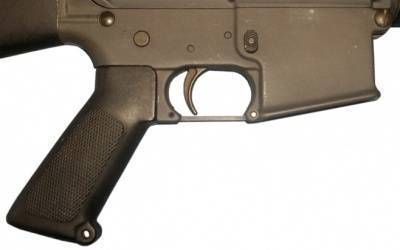 Slabside lower receiver with screw pin front pivot
Slabside lower receiver with screw pin front pivot
Partial Fence
Most notably used on the XM16E1, although also used on a number of contemporary carbines and experimental weapons, the partial fence lower features a horizontal ridge under the ejection port, a captive push pin at the front pivot, and an unfenced magazine release button. The term partial fence is a misnomer as the ridge on the side of the receiver is unrelated to the magazine release button, but is instead a housing for the detent spring which retains the new push pin. The partial fence name has only been applied retroactively in relation to the later full fence lower.
 partial fence lower receiver
partial fence lower receiver
Full Fence
The full fence lower is the standard receiver used on all AR-15s since the M16A1. It can be identified by the raised fence around the magazine release button on the right side of the weapon which is designed to lessen the chances of accidentally releasing the magazine. The design of this lower was upgraded with the adoption of the M16A2 featuring strengthening around the front and rear receiver push pins and fire selector marking on the right side of the receiver. However, due to the difficulty in identifying them from a distance and the fact that different manufacturers use slightly different designs (such as strengthening around only the front push pin or omitting the selector markings on the right side of the weapon), these have been treated as one variant for the purpose of identification. The full fence lower (both A1 and A2) is also the receiver used on Colt’s 9mm SMG. For this purpose it is modified with several holes drilled in the side, which are used to pin spacers in place to hold the smaller 9mm magazine in the standard 5.56mm magazine well.
 A1 full fence lower receiver
A1 full fence lower receiver
 A2 full fence lower receiver
A2 full fence lower receiver
 A2 SMG full fence lower receiver
A2 SMG full fence lower receiver
Примечания
- . Дата обращения 16 июля 2008.
- . Дата обращения 16 июля 2008.
- . Дата обращения 16 июля 2008.
- . Дата обращения 16 июля 2008.
- (недоступная ссылка). Дата обращения 16 июля 2008.
- . Дата обращения 16 июля 2008.
- (недоступная ссылка). Дата обращения 16 июля 2008.
- ↑
- (недоступная ссылка). Дата обращения 16 февраля 2015.
- ↑
- (недоступная ссылка). Дата обращения 7 октября 2015.
- (недоступная ссылка). Дата обращения 7 октября 2015.
- (недоступная ссылка). Дата обращения 30 марта 2015.
- (недоступная ссылка). Rhino Arms. Дата обращения 5 августа 2015.
- (недоступная ссылка). Rhino Arms. Дата обращения 5 августа 2015.
- (недоступная ссылка). Rhino Arms. Дата обращения 5 августа 2015.
- (недоступная ссылка). Дата обращения 16 февраля 2015.
- (недоступная ссылка). Дата обращения 28 марта 2015.
- (недоступная ссылка). Дата обращения 16 февраля 2015.
- (недоступная ссылка). Дата обращения 22 августа 2019.
Flash Hiders
Duckbill
The original AR-15 flash hider, referred to as the “Duckbill”, was only seen on early prototypes. It was quickly abandoned due to the tendency of the front prongs to break off.

3 Prong
Also known as the “Improved 3 Prong” to differentiate it from the earlier “Duckbill” used on the original prototypes, this flash hider is a strengthened version with more metal added to the prongs. This was used on the majority of Colt weapons prior to the M16A1.

A1
The iconic M16 flash hider often referred to as the “Birdcage”, and was on a closed design to address problems encountered with the duckbill type flash hiders snagging on vegetation. Introduced on the M16A1, it has 6 ports equally distributed around the flash hider.

A2
First developed for the M16A2, this flash hider is similar in appearance to the original birdcage except it features five ports spread only over the top half of the flash hider. Although often described as a compensator this was not the intended purpose of the modification, but was instead designed to reduce the amount of material that would be kicked up by the muzzle blast when firing in the prone position.

3.5″ Moderator
Resembling a small sound suppressor, the 3.5” moderator was designed for the Model 607 (which originally used a duckbill flash hider) in an attempt to mitigate the large muzzle flash and blast created when using such a short barrel. It featured a number of internal baffles to reduce not only the flash but also the sound report, meaning it is classed as a suppressor making civilian use more legally problematic (due to this the majority of moderators seen in film and television are replicas omitting the internal baffles and chambers). Although it succeeded in reducing the flash somewhat it led to excessive fouling in the chamber, along with accuracy problems using tracers.

4.25″ Moderator
An improved version of the 3.5” moderator, this features a slotted expansion chamber at the end further reducing the weapon report. When used on the longer barrelled carbines such as the Model 629 or Model 630, a flared piece of metal known as a “grenade ring” was normally fitted behind the moderator in place of the lock washer. This had a hollow on the rear face into which the front mount for the XM148 grenade launcher fitted. After the XM148 project was abandoned in favour of the M203, it was discovered that the M203 could coincidentally be mounted to the Model 629/630 by bracing the front mount against the rear of the expansion chamber of the moderator itself, making the grenade ring superfluous and was hence occasionally removed and replaced with a conventional lock washer. This did require some modification to the front mount of the M203 however, and the barrel of the grenade launcher pointed slightly downwards relative to the barrel of the carbine.
 Early 4.25″ moderator without “grenade ring”
Early 4.25″ moderator without “grenade ring”
 Later model 4.25″ moderator with “grenade ring”
Later model 4.25″ moderator with “grenade ring”
Target Crown
During the Assault Weapons Ban Colt produced a line of weapons known as “Match Target” rifles which did not feature a threaded barrel for a flash hider, instead having the barrel end with a plain target crown.

Производные
На базе AR-15 разработаны образцы оружия, значительно отличающиеся от оригинала, главным образом, благодаря отсутствию демпфера отката затвора и наличию складного приклада, однако сохраняющие визуальное и конструктивное сходство с прототипом.
LR-300 — разработка компании Z-M Weapons. В ресивере пружина перемещена в газоотвод на поршень по типу SIG SG 550, затворная рама укорочена, что позволило сделать складывающийся вбок приклад. В остальном никаких отличий от других представителей семейства AR-15. Однако производство оказалось нерентабельным и было прекращено.
SIG MCX — разработка швейцарской компании SIG Sauer 2010-х гг. В образце отсутствует демпфер отдачи затвора, позволяющий сделать съёмный складывающийся приклад. Затворная рама кардинально переработана, она укорочена и крепится к двум пружинам, расположенным сверху от неё. В автоматике присутствует газовый поршень. Рычаг взведения затвора аналогичен AR-15, также сохранился досылатель патрона. Ствол быстросъёмный подобно FN SCAR и свободно подвешен. Смена ствола возможна в полевых условиях.
Daewoo K2 — южнокорейский автомат 1987 года от компании S&T Daewoo. В нём отсутствует демпфер отдачи затвора, позволяющий сделать складывающийся в бок приклад. Сама затворная группа имеет иной дизайн, она имеет вдвое меньшую длину. В автоматике присутствует газовый поршень. Рычаг взведения затвора расположен в правой части ствольной коробки, подобно АК. Отсутствует досылатель патрона.
терминология
1973 Кольт AR-15 SP1 винтовки с «» плиты стороны нижним приемником (не хватает поднятую боссу кнопки журнала вокруг выпуска) и оригинальным Colt 20 круглого журнал коробки
В 1956 год Armalite разработал легкую селективный огнь винтовку для использования в военных целях и назначил ему модель Armalite стрелковой 15 или AR-15. Из – за финансовых проблем и ограничений с точки зрения трудовых ресурсов и производственных мощностей, Armalite продал дизайн и AR-15 торговой марки наряду с Armalite AR-10 в производственной компании Кольта в 1959 г. В 1964 году Кольт начал продавать свою собственную версию с улучшенной полуавтоматическая конструкция известный как Colt AR-15 . После того, как патенты Colt истекли в 1977 году, активный рынок появился и для других производителей , чтобы производить и продавать свои собственные полуавтоматические AR-15 винтовок стиля. Некоторые версии AR-15 были классифицированы как «боевым оружие» и запрещены в соответствии с Законом об огнестрельном оружии Рекреационного употреБления по общественной безопасности и в 1994 году акт истек в 2004 году.
В 2009 году термин «современная спортивная винтовка» был придуман National Shooting Sports Foundation для своего исследования в том же году , как маркетинговый термин , используемый в промышленности огнестрельного оружия для описания модульных полуавтоматических винтовок , включая AR-15s. Сегодня почти каждый крупный производитель огнестрельного оружия производит свою собственную универсальный AR-15 в стиле винтовки. Как Colt продолжает владеть и использовать AR-15 торговую марку для своей линии AR-15 вариантов , другие производители должны использовать свои собственные номера модели и название , чтобы продать их AR-15 винтовок типа для коммерческой продажи.
Лучшая цена: Bushmaster QRC
Набранные очки: 84.6
Винтовка Bushmaster Quick Response Carbine.
Характеристики
- Механизм: полуавтоматический с использованием энергии пороховых газов
- Длина: от 32.5″ до 36.5″
- Вес: 5.81 фунта
- Прицельные приспособления: коллиматорный прицел
- Усилие на спуске: 6.45 фунта, с отклонением 1.3 фунта
- Рекомендованная розничная цена: $769
Средние размеры группы
- Патроны для варминтинга: 1.65″
- Патроны для охоты на крупную дичь: 1.58″
- Патроны для развлекательной стрельбы: 1.16″
- Средний размер: 1.46″
Итог
При весе менее 6 фунтов винтовка QRC была самой лёгкой, но при этом обладала самым нестабильным и плохим спуском. Хотя винтовка и не имеет открытых прицельных приспособлений, Bushmaster – единственная модель, снабжённая оптическим прицелом – компактным коллиматором.
Не показала она ничего выдающегося и на стрельбище, заняв последнее место по точности. Но при всём этом средний размер группы в 1.46 дюйма – результат достойный и достаточный для большинства охотников. Учитывая ее минимальный вес, цену и наличие коллиматорного прицела QRC это лучшая сделка.
Full Auto vs Semi-Auto Bolt Carrier Groups
First off, “full-auto” BCGs are legal and don’t magically make your AR-15 automatic firing.
The slightly longer and heavier bolt carrier group has an additional lug at the rear of the bolt carrier group.

BCG Shroud, AR15.com
On a full-auto AR-15 or M16, this rear lug pushes the sear release downwards which allows full auto (or burst) fire. In a semi-automatic rifle, this has zero effect on how the gun functions.
Semi-auto carriers are now the ugly step-child of the BCG world and don’t have much purpose…like commercial buffer tubes and stocks.

Semi Auto (top) Vs Full Auto (bottom)
The semi-auto ones have an extra cut that takes out some mass. Mass that should help with reliability.
Semi-auto versions used to be significantly cheaper than FA versions, but now the difference isn’t as drastic.
Main lesson…get a full-auto weighted BCG if reliability is a concern.











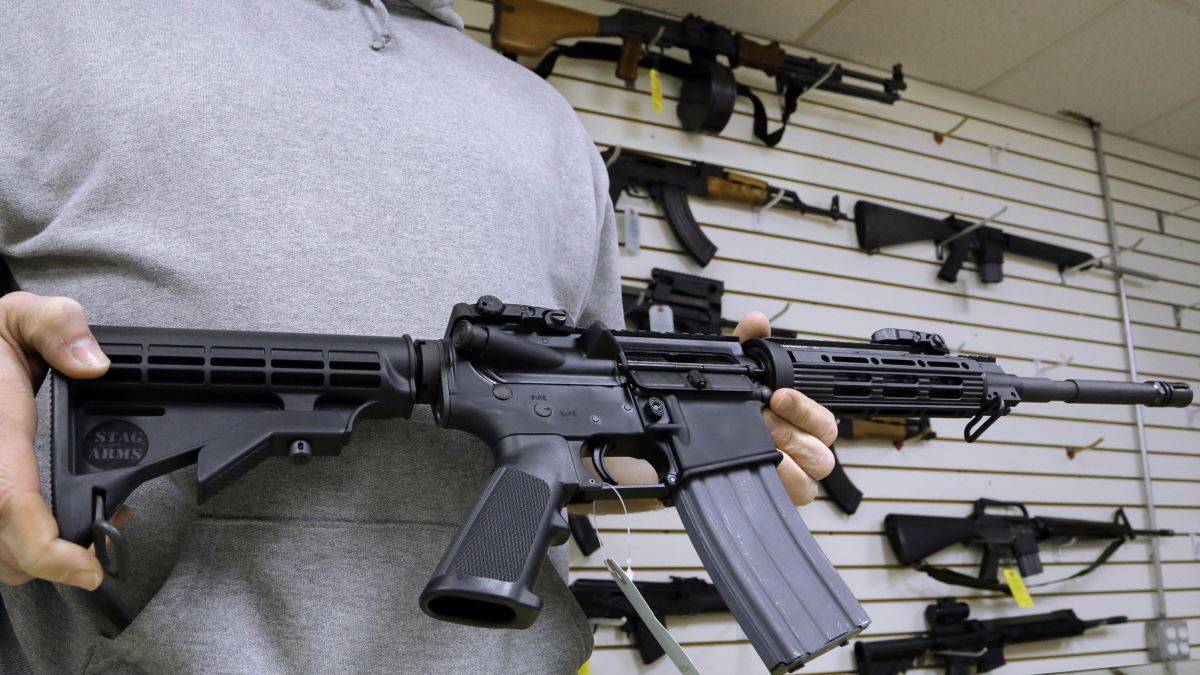

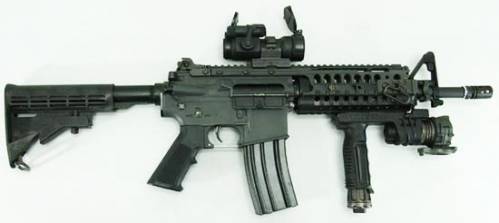








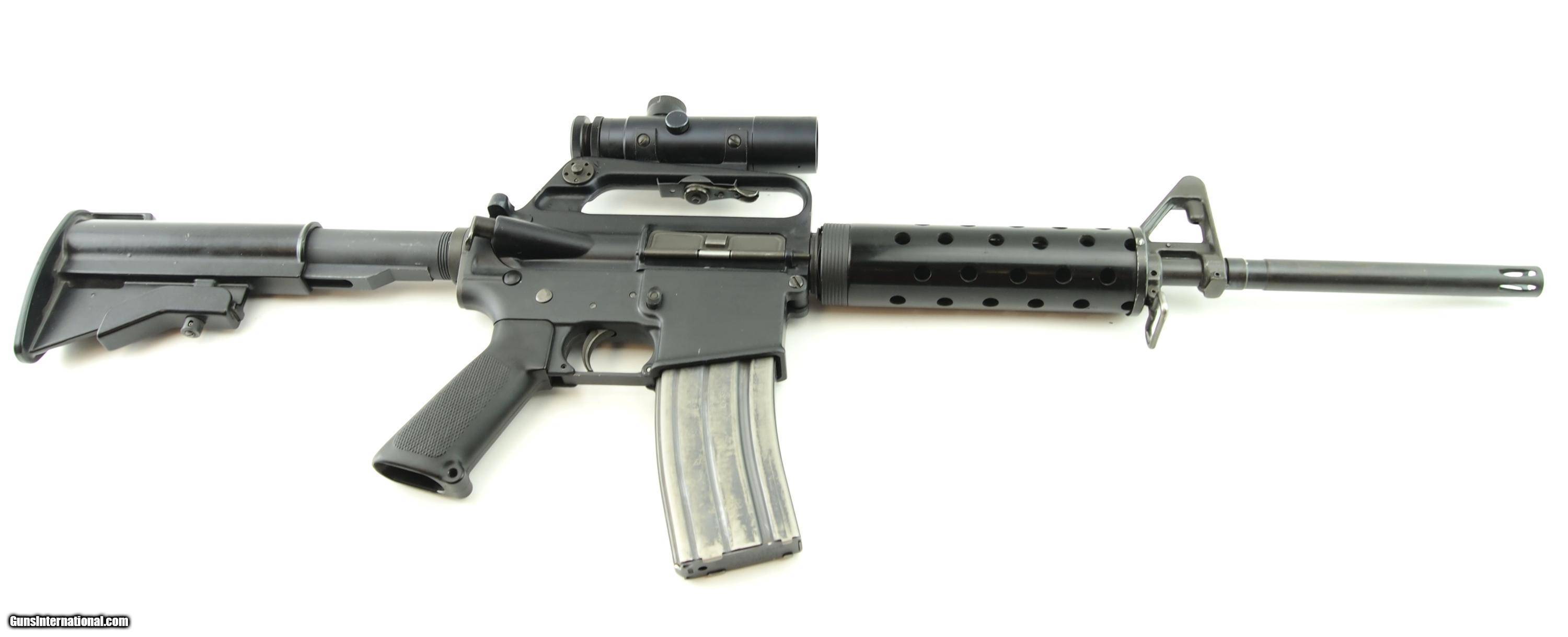
![12 best ar-15 bolt carrier groups (bcg) [hands-on]](https://gunsfriend.ru/wp-content/uploads/6/d/2/6d2f02e30eebd5594802c05600b8b10a.jpg)
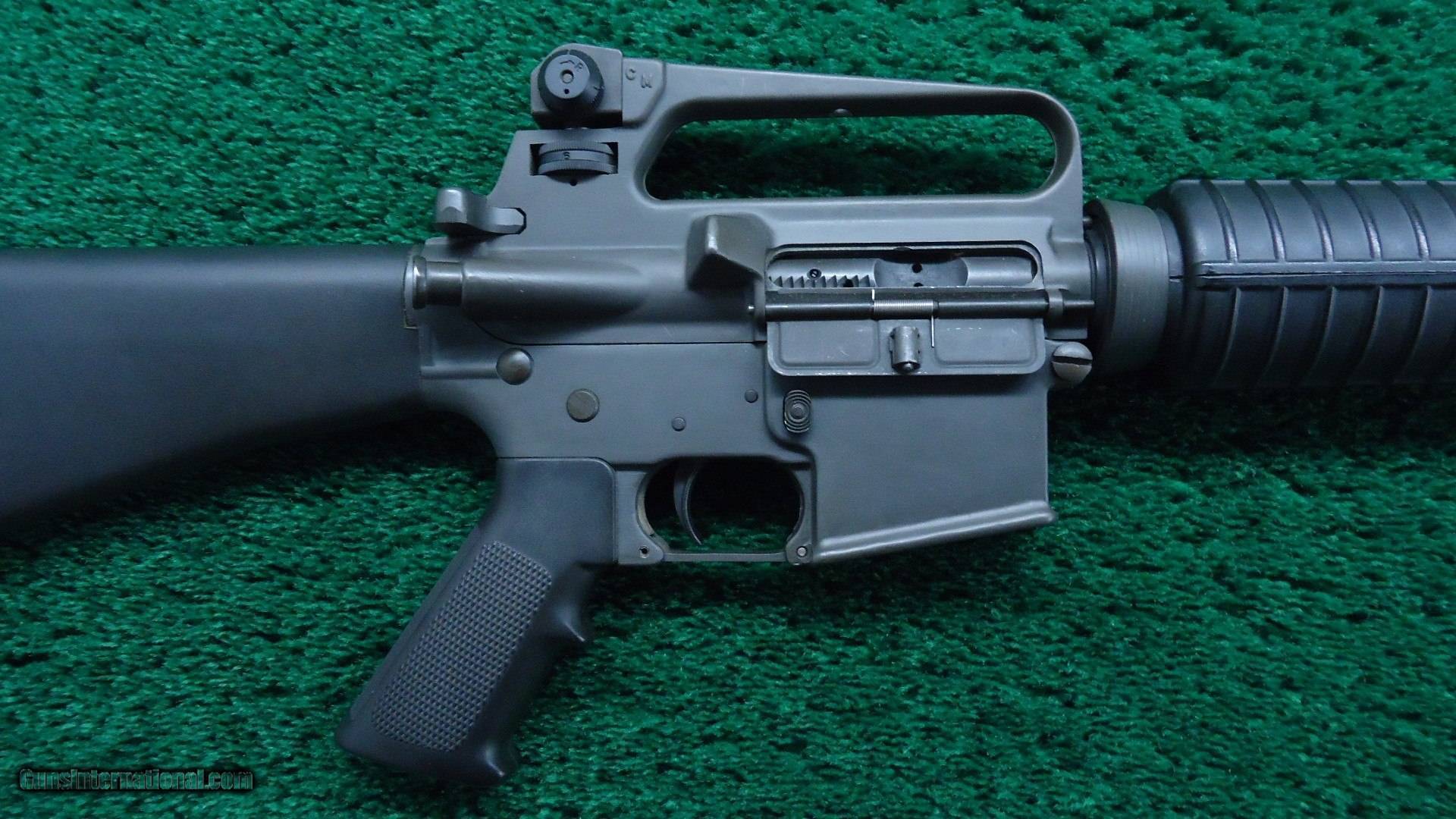


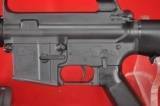



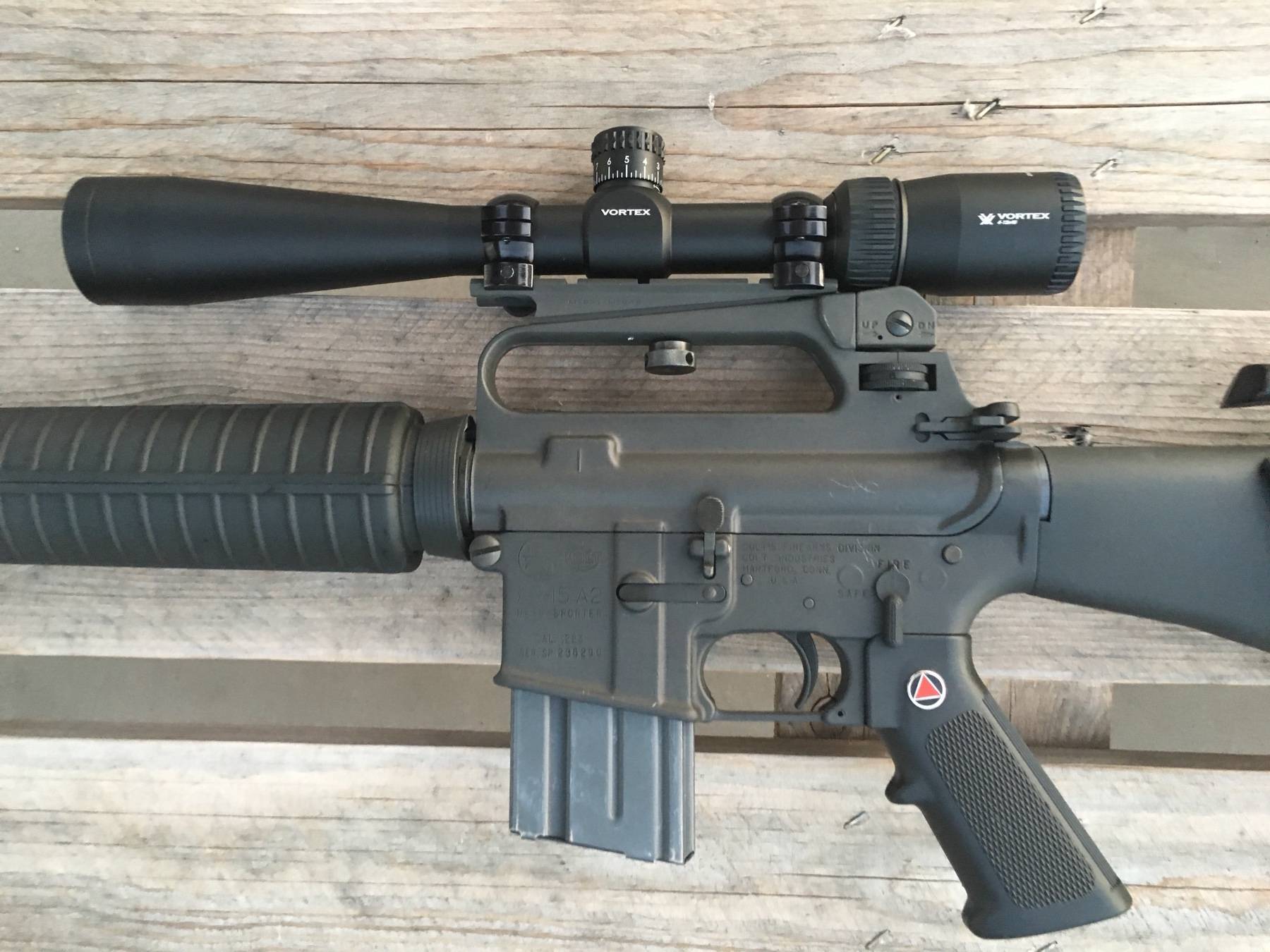
![12 best ar-15 bolt carrier groups (bcg) [hands-on]](https://gunsfriend.ru/wp-content/uploads/3/1/0/3102b884bbfd6571e84d89d5c4ba341a.jpg)









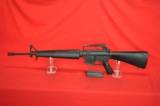
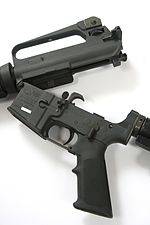


![12 best ar-15 bolt carrier groups (bcg) [hands-on]](https://gunsfriend.ru/wp-content/uploads/1/c/d/1cdd3808028ace83562ae0ee6c0cbb67.jpeg)




